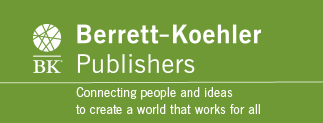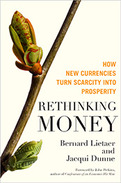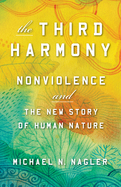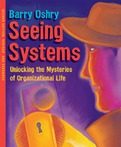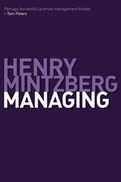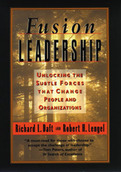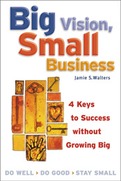2013
Rethinking Money demonstrates that new currencies can not only resolve money's inadequacies but also energize new behaviors that can deliver the healthier world we fervently desire.
As the United States struggles and the economies of Europe stagger, we fail to see a way out of this agonizing cycle of repeated financial meltdowns. In fact, there are thousands of ways to solve not only our recurring fiscal crises but our ongoing social and ecological debacles as well. Solutions are already in place where terrible problems once existed. The changes came about not through increased conventional taxation, enlightened self-interest, or government programs but by people simply rethinking the concept of money. With this restructuring, everything changes. In this visionary book, Bernard Lietaer and Jacqui Dunne explore the origins of our current monetary system—built on bank debt and scarcity—revealing the surprising and sometimes shocking ways its unconscious limitations give rise to so many serious problems. But there is hope. The authors present stories of ordinary people and their communities using new money, working in cooperation with national currencies, to strengthen local economies, create work, beautify cities, and provide education—and so much more is possible. These real-world examples are just the tip of the iceberg—over 4,000 cooperative currencies are already in existence. The book provides remedies for challenges faced by governments, businesses, nonprofits, local communities, and even banks. It demystifies a complex and critically important topic and will strike a deep chord with readers eager to find innovative, meaningful solutions that will do far more than restore prosperity—it will provide the framework for an era of sustainable abundance.- Describes an innovative way ordinary people are creating solutions to address a wide variety of problems globally
- Reveals both the devastation caused by our current money system and ways new currencies are being designed to repair that damage
- Coauthored by one of the worlds leading experts in money systems and an award-winning journalist
- Click here for the press release; contact [email protected] for media review copies
There is a wayin fact, thousands of waysto stop the seemingly inevitable slide toward global self-destruction. Solutions are already in place throughout the world where terrible problems once existed. The changes came about not through the redistribution of wealth, increased taxation, enlightened corporate self-interest, or government handouts but by people simply rethinking the concept of money and acting from this new perspective. With that restructuring, everything changes.
Bernard Lietaer and Jacqui Dunne explain the origins of our current monetary systembuilt on bank debt and based on scarcityand how its inherent limitations drive our ongoing social, economic, and ecological debacles. They then take readers on a fascinating expedition that chronicles stories of ordinary people and their communities solving critical issues that affect us all by using new money systems in tandem with conventional money. These accounts are just the tip of the icebergover 4,000 cooperative currencies are now in circulation.
Rethinking Money demonstrates that new currencies can not only resolve moneys inadequacies but also energize new behaviors that can deliver the healthier world we fervently desire. For instance, currencies have been designed to strengthen local economies, create work, beautify a city, and provide health care.
The book provides remedies for challenges faced by governments, businesses, nonprofits, local communities, and even banks. It speaks clearly about a complex subject and promises to strike a deep chord with readers eager to find meaningful solutions to the problems that threaten our security, our prosperity, and our future.
2020
So many of the problems that beset us—war, poverty, isolation, and the climate crisis—have their roots in an old story about the universe: we are purposeless matter in a random void, and scarcity, competition, and violence are inevitable. Citing the convergence of modern science and the essence of the world's wisdom traditions, Michael Nagler argues for a new story: the universe is conscious and purposeful, humans are spiritual beings, and cooperation and collaboration are our natural way of interacting. This “new story” has had other champions, but Nagler is the first to realize that a piece is missing. For the new story to take hold, we have to embrace nonviolence, not only as a social change tactic but as a way of life.
Nonviolence is the only power strong enough to “move the heart” toward this deep and revolutionary change in worldview. Nagler refers to this as the “third harmony,” which is the harmony within and among us to resolve the crisis of the human image. Calling on us to realize the urgency of nonviolence for resolving our personal and collective problems, Nagler focuses on how to shift to our story on a personal, everyday level and then integrate it into the very foundations of our understanding of humanity and community, for our sake, for the sake of future generations, and the sake of nonviolence itself.
2007
• New edition of a classic, revised and updated throughout, with a new section and a new epilogue
• Explains why so many efforts at creating satisfying and productive systems end in disappointment
• Offers an approach to improving organizational life that removes the personal biases that stymie so many change efforts
2009
This landmark book draws on Mintzberg's observations of twenty-nine managers, in business, government, health care, and the social sector, working in settings ranging from a refugee camp to a symphony orchestra. What he saw—the pressures, the action, the nuances, the blending—compelled him to describe managing as a practice, not a science or a profession, learned primarily through experience and rooted in context.
But context cannot be seen in the usual way. Factors such as national culture and level in hierarchy, even personal style, turn out to have less influence than we have traditionally thought. Mintzberg looks at how to deal with some of the inescapable conundrums of managing, such as, How can you get in deep when there is so much pressure to get things done? How can you manage it when you can't reliably measure it?
This book is vintage Mintzberg: iconoclastic, irreverent, carefully researched, myth-breaking. Managing may be the most revealing book yet written about what managers do, how they do it, and how they can do it better.
2004
Fusion Leadership describes a new way of leading based on "fusion," a coming together of whole individuals to accomplish mutual goals based on shared vision and values. Fusion leaders are those who engage not only the bodies and minds of their employees, but also their hearts and souls. Unlike the traditional, hierarchical "fission" management style used for centuries in business, fusion leadership supports personal growth and ingenuity, qualities that facilitate change.
Building on the New Science assumptions that organizations can act as living systems and evolve with changing conditions, Fusion Leadership shows, in practical terms, how individuals and organizations can grow together. Fusion, the authors reveal, unleashes subtle forces-mindfulness, vision, heart, courage, communication, and integrity-which can fundamentally transform organizations.
Mindfulness, they say, represents independent thinking, personal creativity, and an open mind. Vision encompasses the higher purpose toward which people work. Heart represents caring and compassion-positive feelings that underlie workplace relationships. Communication influences vision, values, and emotions; it also involves listening and discerning. Courage motivates people to take risks. Integrity involves honesty, trust, and service-going beyond self-interest to give something to the organization. Through stories, parables, and probing questions, the book helps readers begin to revive these qualities within themselves. It also shows the value and applications of social technologies based on conversation-including dialogue, future search, and whole-scale change-which leaders can use to create organizational fusion, unleashing new synergies among people and achieving far-reaching results.
- Richard Daft is the author of two leading management textbooks, each of which has sold over 230,000 copies: Organization Theory and Design, 6th Edition and Management. 4th Edition
- Offers a striking new metaphor for managing and leading organizations-based on the principle of fusion (a joining together) rather than fission (a splitting apart or separation)
- Presents practical applications of fusion technologies-doable solutions to real problems-and inspires leadership and change
- Provides a personal, practical bridge to New Science and Systems Theory ideas
